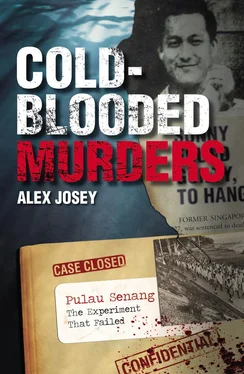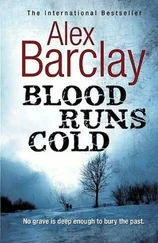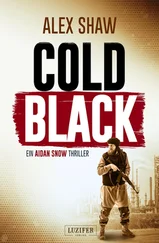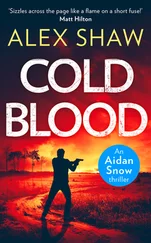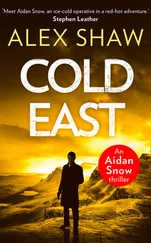Alex Josey - Cold blooded murders
Здесь есть возможность читать онлайн «Alex Josey - Cold blooded murders» весь текст электронной книги совершенно бесплатно (целиком полную версию без сокращений). В некоторых случаях можно слушать аудио, скачать через торрент в формате fb2 и присутствует краткое содержание. Жанр: Криминальный детектив, на английском языке. Описание произведения, (предисловие) а так же отзывы посетителей доступны на портале библиотеки ЛибКат.
- Название:Cold blooded murders
- Автор:
- Жанр:
- Год:неизвестен
- ISBN:нет данных
- Рейтинг книги:5 / 5. Голосов: 1
-
Избранное:Добавить в избранное
- Отзывы:
-
Ваша оценка:
- 100
- 1
- 2
- 3
- 4
- 5
Cold blooded murders: краткое содержание, описание и аннотация
Предлагаем к чтению аннотацию, описание, краткое содержание или предисловие (зависит от того, что написал сам автор книги «Cold blooded murders»). Если вы не нашли необходимую информацию о книге — напишите в комментариях, мы постараемся отыскать её.
Cold blooded murders — читать онлайн бесплатно полную книгу (весь текст) целиком
Ниже представлен текст книги, разбитый по страницам. Система сохранения места последней прочитанной страницы, позволяет с удобством читать онлайн бесплатно книгу «Cold blooded murders», без необходимости каждый раз заново искать на чём Вы остановились. Поставьте закладку, и сможете в любой момент перейти на страницу, на которой закончили чтение.
Интервал:
Закладка:
As Mr Coomaraswamy rose to re-examine the witness. the judge told Yeo that he need fear no consequences of any answer he may give to any question he may be asked. Mr Coomaraswamy: Now, where have you been living for the past 10 days? Mr Francis Seow: I object to that- His Lordship: How does this come up in cross-examination? Mr Coomaraswamy: My instructions are that he was held incommunicado by the Penang police and threatened that he would be in trouble if he gave evidence in support of what he said in the affidavit. His Lordship: Where have you been for the past 10 days? Yeo: I left Penang on 2 May for Taiping. From Taiping I went to Kuala Lumpur. Last night I received a phone call saying I was wanted in Singapore. His Lordship: I am bound to say, exercising all the restraint I can, that I think it was, Mr Coomaraswamy, a most unhappy remark for you to say that this witness had been kept incommunicado by the Penang police for 10 days. There is not the slightest evidence to support it. I shall have a lot to say about this to the jury when I come to sum up. Mr Coomaraswamy: I was doing it on instruction, my Lord, and the instructions were given to me by a responsible person.
On the 11 ^ th day of the trial (the fourth day of the defence), Mr Coomaraswamy drew the court’s attention to a report in The Straits Times that Richard Ang was facing charges in connection with a witness in the case. The judge called for a copy of the paper and ordered the jury not to read the report.
Defence counsel said that Richard Ang had been arrested on 22 April and produced in court on 23 April. The case was mentioned on 30 April and hearing fixed for August. (Subsequently the case against Richard Ang was dropped). Mr Coomaraswamy complained that it was significant that the report should have appeared when his intention of calling him as a witness had already been known. Mr Seow assured the judge that the prosecution had nothing to do with the report. “I should be horrified if you had,” said the judge.
Mr Coomaraswamy closed his case after calling three more witnesses: two police officers who gave evidence about the car accident, and 16-year-old William Ang. One policeman said he had never in two and a half years in the area even seen dogs in the vicinity of the accident and William Ang said that Jenny had learned to swim ‘quite fast’. He said he had seen Jenny scuba-diving twice off Changi Beach.
Both Mr Coomaraswamy, for Ang, and Mr Francis Seow addressed the court on the 12 ^ th day of the trial. Defence counsel spoke for two hours. Crown counsel spoke altogether for an hour and a quarter. Then the judge began his summing up. He addressed the jury for three-quarters of an hour on Monday, 17 May 1965, and for another hour and three-quarters on Tuesday morning.
The Trial: The Defence
In his two-hour speech for the defence, Mr Coomaraswamy spoke from rough notes. He submitted there were numerous ways in which Jenny could have met her death-if, in fact, she was dead. She could have been swept away, or struck her head against some coral and become unconscious and subsequently lost her flipper. She might have been attacked by a shark. She might have been suffering from nitrogen narcissus (a form of numbness). “In a case like this, you cannot act on evidence that maybe she is dead. You cannot even act on evidence that allows you to say, ‘You may be pretty sure she is dead.’ You have to go beyond that and act only if you can be morally certain beyond reasonable doubt that she is dead.”
He submitted that on the evidence, the jury could not say beyond a reasonable doubt that the accused did kill Jenny in the manner alleged by the prosecution.
Quoting extensively from a law book on the assessment of circumstantial evidence, Mr Coomaraswamy said that the prosecution evidence, put simply and stripped of all the trimmings, was that the accused stood to gain by the death of Jenny, that he was with her when she disappeared, that after her disappearance he made representations that he presumed her to be dead, and that he had told untruths in the witness-box. “On this basis the prosecution is going to ask you to return a verdict that he is guilty of murder.”
Dealing with the allegation that Ang told untruths in the witness-box, Mr Coomaraswamy read extracts from accused’s diary and submitted that if the diary was a ‘diary of truth’, as the prosecution contended, it was strange that it contained no entry on 8 June of a telephone call to McDougall (a director of Edward Lumley Limited, the insurance company).
Ang had also been cross-examined on certain representations he had made to institutions of higher learning as to his qualifications and his name. “What has this to do with the case?” asked counsel. “For this, are we going to convict him of murder?”
He asked the jury to consider the accused’s evidence as a whole and his evidence in relation to the statement he made to the police soon after the incident, when there was no time for fabrication. They could then ask, was he telling the truth or not?
Mr Coomaraswamy also invited the jury to look at those parts of the accused’s evidence, where he could easily have lied, but where obviously he had given truthful answers. For instance, there was an important matter on which he could have lied: that he and not his mother was the real beneficiary by Jenny’s death.
Mr Coomaraswamy reminded the jury that, as the prosecution had freely acknowledged, the evidence against the accused was purely circumstantial and, correspondingly, the prosecution’s task and burden was greater. In other words, the prosecution must produce in seven ‘independent minds’ a degree of persuasion very much greater than it would have had to achieve had there been direct evidence of death and the mode by which death was achieved.
Counsel then cited a long passage from an authority on the assessment of circumstantial evidence, with the tendency of police officers to form a conclusion, and then seek out evidence to support that conclusion.
Counsel said that within two to three weeks of the alleged offence, accused was subjected to a long interrogation and he made a ‘full and frank statement’. Counsel submitted that the prosecution had all the evidence it wanted by October 1963, but it was not until 16 months later that the accused was arrested.
Mr Coomaraswamy said that it was always possible to place a suspicious interpretation, if one so wished, on any piece of evidence. For instance, the prosecution had asked the accused if he knew that Jenny treasured a ring, which was handed over to the Marine Police. Accused had admitted that he did. The interpretation sought to be placed on this admission was that this man, who had so professed his love for the girl, would have wanted to retain the ring as a memento. But if the accused had, in fact, retained the ring, he would have been described as an evil man who, not satisfied with the money he stood to collect from her death, also took the ring that belonged to the girl. “What the prosecution is going to ask you to do is to act on suspicion and speculation.”
Nevertheless, the prosecution had not yet tried to crystallize the speculation and theories so that the defence could meet them. One clue to the prosecution’s speculation was in crown counsel’s question to the accused, suggesting that after he had insured her heavily he took her out to Pulau Dua so that she could drown at sea, and so that he could collect the money.
Counsel said that the evidence should be examined to see how it fitted this theory. Jenny was a bar girl, who encountered a large number of men, each adopting different methods to win her favours. “To put it shortly, you must accept it that she was a worldly-wise girl,” said Mr Coomaraswamy. He submitted that Jenny wanted insurance for her own reasons. The jury must believe that there were limits to gullibility even for a bar girl.
Читать дальшеИнтервал:
Закладка:
Похожие книги на «Cold blooded murders»
Представляем Вашему вниманию похожие книги на «Cold blooded murders» списком для выбора. Мы отобрали схожую по названию и смыслу литературу в надежде предоставить читателям больше вариантов отыскать новые, интересные, ещё непрочитанные произведения.
Обсуждение, отзывы о книге «Cold blooded murders» и просто собственные мнения читателей. Оставьте ваши комментарии, напишите, что Вы думаете о произведении, его смысле или главных героях. Укажите что конкретно понравилось, а что нет, и почему Вы так считаете.
